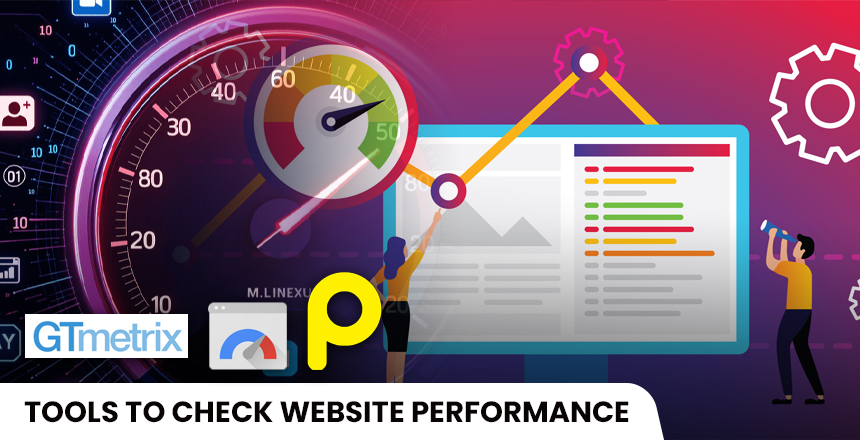Clean layout, a rich color palette and impressive visuals make your website attractive. Yet, all of this is useless if your site is slow on the Internet, not usable on handheld devices or can’t be found by search engines. This is why looking at how your website is working is important for your business, not only engineering.
There’s some excellent news too. Even if you’re not a developer, you can check how your site works. You can access free or inexpensive software online that will offer you important advice about the issues found on your website.
These are the best tools available for checking website speed, whether you’re a businessperson, marketer or new to the web.
1. Google PageSpeed Insights tool
First, let’s look at a tool that a huge number of people use—and for a very good reason.
- PageSpeed Insights analyzes the speed of your site on mobile and desktop browsers. There is more to be said about today’s marketing. It also helps with different tips to boost the website’s speed and make it better for users.
- The reasons for its usefulness.
- Assigns points from 0 to 100 to an act of speaking
- You can see your Core Web Vitals results in action such as when your content starts to load up.
- Encourages developers to try out image compression, make code files smaller and check their server.
2. GTmetrix
Interested in having a clearer look at your website’s performance? GTmetrix is useful because it shows how your website’s load time is broken down into different stages.
Key benefits:
- Driver displays a waterfall chart for every file and request
- Tests how your site performs, how it is constructed and its pace in loading
- Great way to find bottlenecks caused by large images or scripts we do not need
- It is most valuable for figuring out why your site takes time to load and what each element adds to the delay.
3. The Google Search Console
If you are on Google and your site is live, Search Console should be your regular tool. It updates you on your site’s search position and identifies any technical factors that might harm its visibility.
- What you learn from it:
- Google seeing (or missing) important pages in your site
- Things that make a site hard to use on mobile
- Data for clicks, impressions and averages in search search results
- Core Web Vitals are based on data collected from real users.
https://search.google.com/search-console
4. Google’s Mobile-Friendly Test
These days, your website has to be optimized for mobile first. If your website cannot be accessed on mobiles or tablets, users won’t stay and you could also lose your search engine positions.
Using Google’s Mobile-Friendly Test will help you find out if your site can be used on mobile devices and list any problems it has.
- You can’t see the text well
- Clickable buttons are not spaced far enough apart.
- Content bigger than can be shown on the screen
https://search.google.com/test/mobile-friendly
5. Speed test provided by Pingdom
With Pingdom, everything is plain, speedy and efficient. It checks your website speed from several overseas spots and displays how fast users will see your site.
Highlights:
- Total performance score
- Ease of use, length of pages and number of requests
- Outline of ways to boost performance
6. Lighthouse is available within Chrome.
If you prefer Google Chrome, the Lighthouse tool is available to help with your performance test.
Information about how to deal with it:
- Launch your site in Chrome.
- Anywhere on the webpage → “Inspect.”
- Move to the Lighthouse tab on your page and produce a report.
Lighthouse checks:
- Speed
- SEO
- Accessibility
- Best practices when coding
- It’s particularly useful if you need a detailed review but don’t want or need to hire a developer.
7. You should use SEMrush or Ahrefs to focus on SEO and how healthy your website is.
Having these tools will help your website succeed in search engines and drive a lot of traffic, assuming you’re committed to how your site performs.
They offer:
- Comprehensive checks of your website using technology
- Backlink analysis
- Keyword tracking
- Reports on broken links
- Notifications about page speed
- Agency and professional digital marketers across the globe find these tools very useful.
https://www.semrush.com
https://www.ahrefs.com
Bonus: Screaming Frog SEO Spider
You can use Screaming Frog to analyze your whole website just as Googlebot does. It’s a desktop program (available for free up to 500 pages) designed to spot:
- Duplicate content
- Broken links
- Redirect issues
- Missing both titles and meta descriptions
- Recommended for a full review of a site before making any design or SEO changes.
https://www.screamingfrog.co.uk/seo-spider
Final Thought: Performance is Equal to Power
People get their initial view of your business from your website. A sluggish website can drive people away, reduce your sales and affect your reputation.
On the positive side? Understanding how your website performs doesn’t require macho technology skills. The correct tools allow you to:
- Spot weaknesses
- Optimize speed
- Enhance your website’s search ranking.
- Make it easier and more satisfying for people to use your website
It’s important to regularly check how your website performs, mainly after you have updated its design or added any new content. They work with you to create a quicker, smarter and more successful website.








